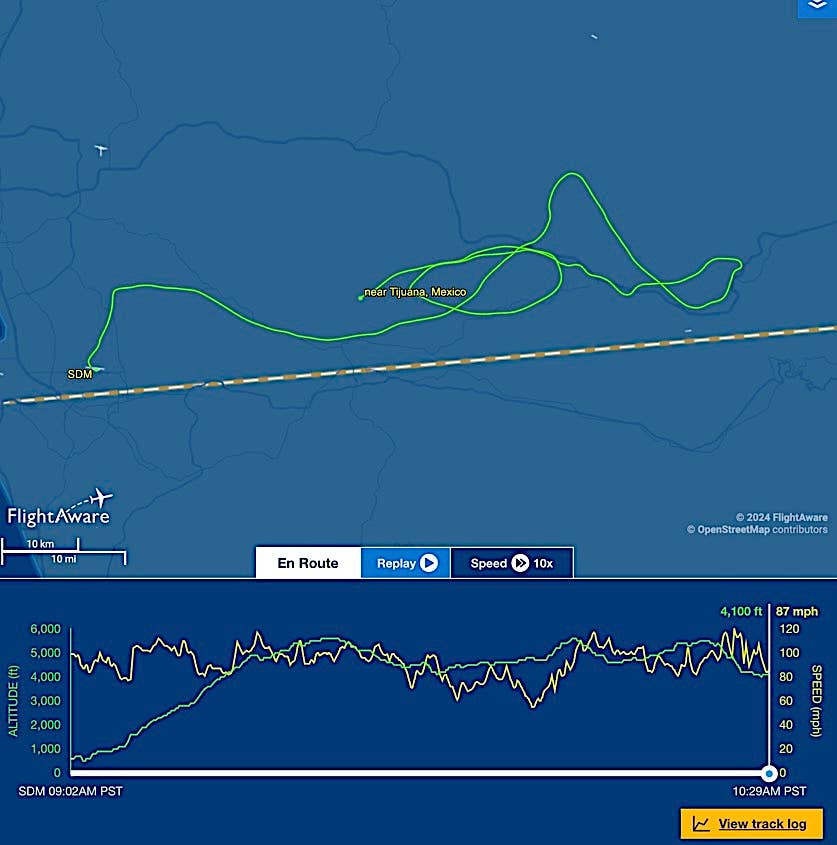General Aviation Accident Bulletin
AVweb’s General Aviation Accident Bulletin is taken from the pages of our sister publication, Aviation Safety magazine. All the reports listed here are preliminary and include only initial factual findings…

Aviation Safety Accident Bulletin
AVweb's General Aviation Accident Bulletin is taken from the pages of our sister publication, Aviation Safety magazine. All the reports listed here are preliminary and include only initial factual findings about crashes. You can learn more about the final probable cause on the NTSB's website at www.ntsb.gov. Final reports appear about a year after the accident, although some take longer. Find out more about Aviation Safety at www.aviationsafetymagazine.com.
April 7, 2021, Great Valley, N.Y.
Cessna 177B Cardinal
The airplane was destroyed at about 1408 Eastern time when it apparently stalled shortly after liftoff and collided with terrain. The private pilot was seriously injured; the pilot-rated passenger was fatally injured.
A witness, who lives adjacent to the turf runway, saw the accident airplane taking off. She said the airplane bounced a couple of times before it became airborne and had climbed to about 20 feet AGL when it made a “hard left bank” and she could see the tops of both wings. The left wing impacted the ground and “crumbled,” and then the airplane “collapsed.” The witness said she did not see or hear anything unusual with the airplane or engine prior to the accident, except that it was “low” and “late” taking off.
Ground scars and damage to the airplane were consistent with it impacting terrain in a left-wing-low, nose-down flight attitude. “The left and right wings came to rest upright. The engine, fuselage, and tail were inverted.” Flight control continuity was established for all flight controls to the cockpit area, except for the right aileron control cable, the ends of which were frayed, consistent with overload. Examination of the airframe and engine revealed no anomalies that would have precluded normal operation. The flap jackscrew’s position revealed the wing flaps were fully retracted at the time of impact.
April 11, 2021, Blakely Island, Wash.
Cessna 182H Skylane
At about 1638 Pacific time, the airplane was ditched following complete engine failure, sustaining substantial damage. The pilot and passenger sustained minor injuries. Visual conditions prevailed.
Shortly after takeoff from an island airport, the airplane was at about 700 feet above the water when the engine sputtered, followed by complete loss of power. The pilot initiated a forced landing to the water near the shoreline. During the landing, the airplane nosed over and sank. Both occupants successfully egressed.
April 12, 2021, Weyers Cave, VA
Piper PA-28-140 Cherokee 140
The airplane was substantially damaged at about 1920 Eastern time during an attempted go-around. The pilot was seriously injured, and the passenger received minor injuries. Visual conditions prevailed.
The pilot reported winds were from 320 degrees at eight knots, and he entered the traffic pattern on the left downwind for Runway 23. Upon turning on the final leg of the traffic pattern, he opted to land with only two notches of flaps because of the crosswind. As he approached the runway, he realized he was fast, at around 90 mph, with the engine power fully retarded. He concluded it was an unstable approach and applied full power but did not gain altitude. Further, the airplane banked hard to the left at about 50 feet AGL. He applied right rudder and aileron in an attempt to level the wings. The next thing he remembered was a first responder helping him out of the airplane. The passenger had already egressed.
April 17, 2021, McKinney, Texas
Piper PA-28R-200 Arrow II
At about 1948 Central time, the airplane sustained substantial damage when it was force-landed following engine failure. The flight instructor and student pilot sustained minor injuries. Visual conditions prevailed.
While turning from base to final, the engine lost all power. The flight instructor cycled the throttle and switched fuel tanks, but without success. He noted there were no abnormal engine noises or shaking, only a loss of power he thought was consistent with some type of fuel issue. The propeller continued to turn. The flight instructor made a forced landing to an open grass field, during which the fuselage and both wings were damaged.
April 17, 2021, Venice, Fla.
Cessna 172S Skyhawk SP
The airplane was substantially damaged at 1715 Eastern time when its engine lost power in the traffic pattern. The flight instructor and private pilot obtaining a flight review were not injured. Visual conditions prevailed.
The flight departed with full fuel and completed maneuvers in the local practice area before returning for touch-and-go landings. The flight instructor demonstrated the first touch and go, which was uneventful, and the student took controls for the second one. On downwind, abeam the runway numbers, the student pilot intended to reduce engine power to 1700 rpm but it dropped to 1000 and could not be increased.
The instructor took the flight controls and attempted to troubleshoot the engine issue but power was not restored. Their position would not allow them to make it to the runway, so he turned toward a golf course fairway and pond, ending up in the pond.
This article originally appeared in the July 2021 issue of Aviation Safety magazine.
For more great content like this, subscribe to Aviation Safety!






